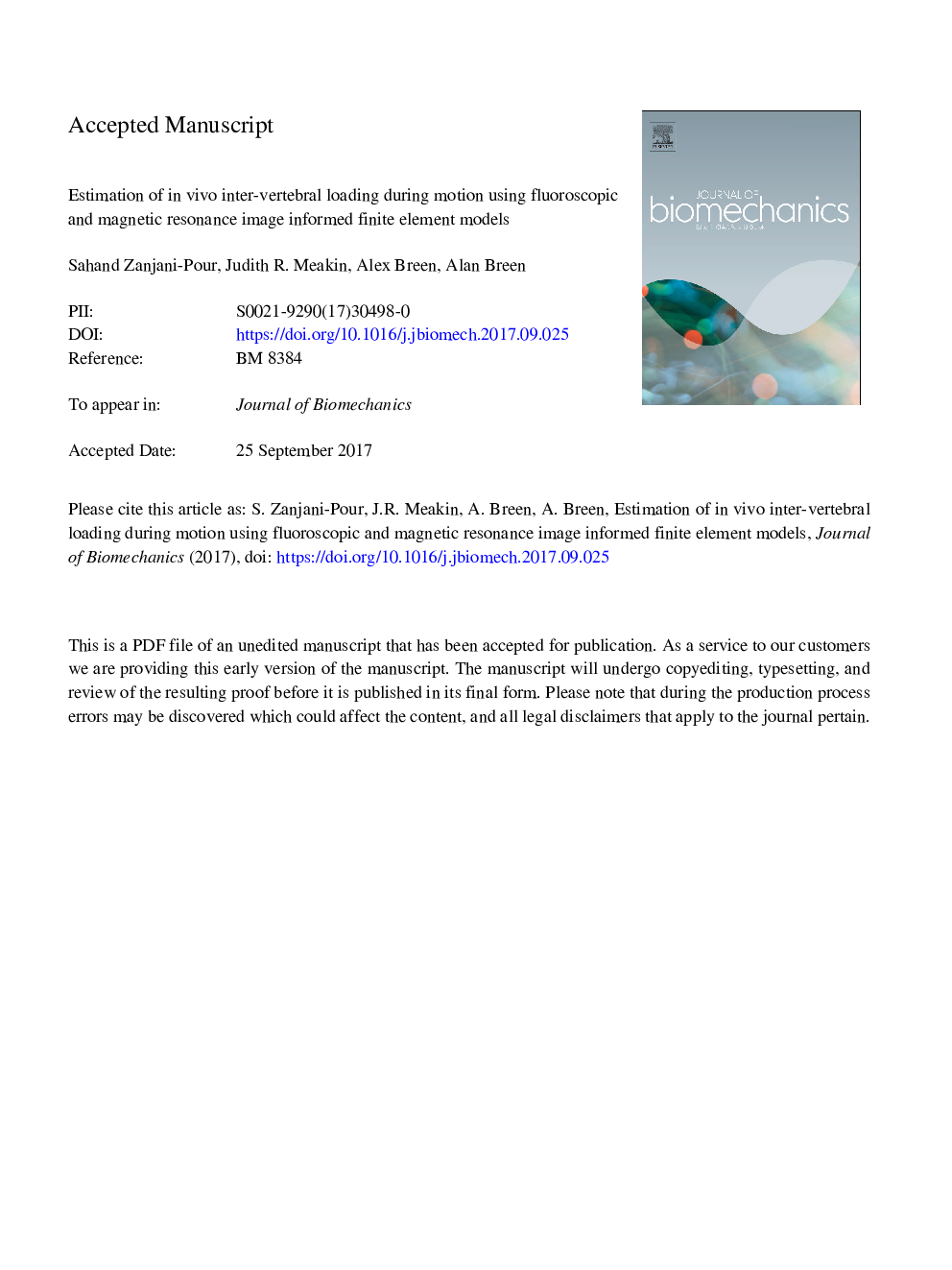| Article ID | Journal | Published Year | Pages | File Type |
|---|---|---|---|---|
| 7236491 | Journal of Biomechanics | 2018 | 26 Pages |
Abstract
Finite element (FE) models driven by medical image data can be used to estimate subject-specific spinal biomechanics. This study aimed to combine magnetic resonance (MR) imaging and quantitative fluoroscopy (QF) in subject-specific FE models of upright standing, flexion and extension. Supine MR images of the lumbar spine were acquired from healthy participants using a 0.5 T MR scanner. Nine 3D quasi-static linear FE models of L3 to L5 were created with an elastic nucleus and orthotropic annulus. QF data was acquired from the same participants who performed trunk flexion to 60° and trunk extension to 20°. The displacements and rotations of the vertebrae were calculated and applied to the FE model. Stresses were averaged across the nucleus region and transformed to the disc co-ordinate system (S1â¯=â¯mediolateral, S2â¯=â¯anteroposterior, S3â¯=â¯axial). In upright standing S3 was predicted to be â0.7â¯Â±â¯0.6 MPa (L3L4) and â0.6â¯Â±â¯0.5 MPa (L4L5). S3 increased to â2.0â¯Â±â¯1.3 MPa (L3L4) and â1.2â¯Â±â¯0.6 MPa (L4L5) in full flexion and to â1.1â¯Â±â¯0.8 MPa (L3L4) and â0.7â¯Â±â¯0.5 MPa (L4L5) in full extension. S1 and S2 followed similar patterns; shear was small apart from S23. Disc stresses correlated to disc orientation and wedging. The results demonstrate that MR and QF data can be combined in a participant-specific FE model to investigate spinal biomechanics in vivo and that predicted stresses are within ranges reported in the literature.
Related Topics
Physical Sciences and Engineering
Engineering
Biomedical Engineering
Authors
Sahand Zanjani-Pour, Judith R. Meakin, Alex Breen, Alan Breen,
